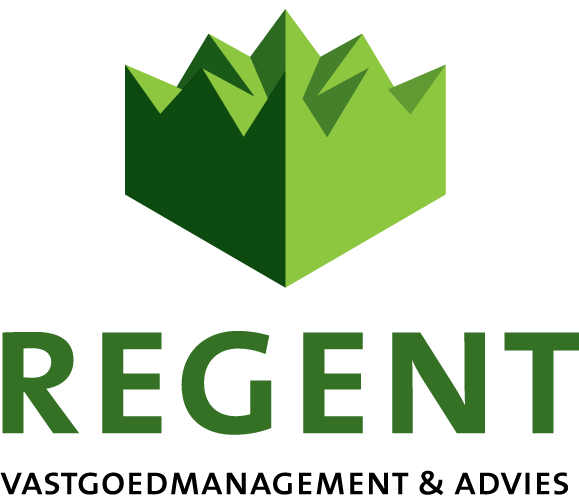What’s Software Lifecycle Administration Alm?
Despite it nonetheless being relatively new, ALM is a more traditional strategy that focuses on the complete application lifecycle, from conception to retirement. It uses processes, instruments, and technologies to handle necessities, design, growth, testing, deployment, and operations. While ALM covers the complete software lifecycle, SDLC only focuses on the software development course of. In different words, ALM consists of all five levels of the app’s lifecycle — requirements, growth, testing, deployment and maintenance — however SDLC solely consists of one stage — improvement.
This course of varies primarily based on the appliance sort because each product type requires different attributes and specs. For instance, software as a service (SaaS) apps have to be deployed on the company’s inside servers, while customers can entry web apps via the internet. Continuous monitoring of utility efficiency, consumer behaviors, and feedback loops can present real-time insights, enabling teams to iterate and improve constantly. When ALM is harmonized with different business processes, it results in more cohesive software improvement, improved product high quality, and elevated buyer satisfaction. In at present’s quickly evolving tech landscape, Application Lifecycle Management (ALM) holds more significance than ever earlier than. Modern software program improvement practices like DevSecOps and Agile methodologies necessitate a more integrated and iterative method to utility management.
Software Lifecycle Administration Stages
It integrates numerous phases of SDLC and extends beyond, addressing the application’s upkeep, optimization, and eventual phase-out. ALM emphasizes department coordination, making certain seamless growth, maintenance, and governance integration. Just like an individual, a piece of software program will undergo many phases all through its life, all through to retirement. This is why Application Lifecycle Management (ALM) wants to take a seat on the epicenter of software program development processes. It’s an integrated system comprising the folks, processes, and instruments that guide a software program application from its inception to its retirement.

This symbiotic relationship fosters faster concern decision, smoother updates, and optimized performance. In essence, while SDLC focuses on the “how” of creating software program, ALM provides a holistic view, addressing the “how” as well as the “what” and “why” all through the application’s whole lifespan. To mitigate the liquidity threat, organizations might implement ALM procedures to extend liquidity to fulfill cash-flow obligations ensuing what does alm stand for from their liabilities. Finally, ALM is a coordinated course of that oversees an organization’s complete balance sheet. It entails coordination between many different departments, which could be difficult and time-consuming. One of the first metrics to contemplate is how rapidly you can transfer from an concept to a live product or feature.
Integrating Alm With Different Business Processes
Hi @mtorres Thanks for your reply, each are different license administration concepts like legacy and advanced so we have separate documentation for each and no doc will give this info in a joint. The Inflectra information base consists of a extensive variety of useful support articles written by Inflectra’s customer support specialists. We imagine that in the future, customers will be using Enterprise Lifecycle Management (ELM) options. These will contain components of ALM, PLM, and will either integrate with ERP systems, or even embrace such features. In parallel to what occurred with ERP, the standard enterprise line functions of HR, Finance, and other enterprise capabilities are additionally changing into intertwined with ALM / PLM methods.

This stage additionally includes full integration testing, and all points or bugs discovered and reported could also be addressed by the development team. ALM tools could be synchronized with project management solutions, making certain project milestones align with growth levels. This integration helps the broader organizational goals track with the software program’s development, ensuring on-time delivery and adherence to scope. Similarly, Agile methodologies thrive within an ALM framework with their iterative cycles and emphasis on continuous feedback. ALM tools facilitate this by providing teams with real-time collaboration capabilities, making certain that development, testing, and deployment processes are in sync.
From guaranteeing options work as supposed to guaranteeing responsiveness underneath peak loads, this stage is devoted to refining the software program to fulfill or exceed the standard benchmarks. Although ALM frameworks differ tremendously amongst organizations, they typically contain the mitigation of a broad range is dangers. Some of the commonest dangers addressed by ALM are interest rate risk and liquidity risk. Because ALM involves such a variety of variables, processes, people, functions, and extra, devoted tools are usually used to make certain that every little thing maintains group, compliance, and communication between teams. The ALM software permits users to outline project requirements and develop user stories, which might then be prioritized, scheduled and damaged down into detailed duties used for useful resource tracking.
Legal
The timesheets entered by a developer to mark the time spent fixing a bug or implementing a characteristic may need to be billed to a shopper, or used to determine that quarter’s hiring wants. Upgrading to a paid membership gives you access to our intensive collection of plug-and-play Templates designed to power your performance—as nicely as CFI’s full course catalog and accredited Certification Programs. For more information on each of those phases and the way ALM tools may help, see our useful resource on the Key Components of Application Lifecycle Management. There are several actions that might trigger this block together with submitting a sure word or phrase, a SQL command or malformed data. Access and obtain collection of free Templates to assist energy your productiveness and efficiency.
A phased rollout is usually employed, permitting for real-world suggestions before a broader release. When defining necessities, all stakeholders gather to declare what they need from the application to support their business cases. Requirements can embody a range of factors, from the business wants of the stakeholders to compliance and governance necessities. In this quickly advancing technological world, ALM acts as each an anchor and compass, grounding groups in finest practices whereas pointing the best way ahead. For organizations aiming for excellence in their software endeavors, understanding and implementing robust ALM practices is not just beneficial — it is imperative.
Feedback loops embedded inside ALM processes assist refine software program options, enhance user expertise, and prioritize growth tasks based on consumer preferences and needs. DevSecOps, which embeds safety within the DevOps course of, aligns perfectly with ALM. ALM’s holistic method ensures that safety concerns aren’t an afterthought however are built-in throughout the applying’s life. This proactive stance helps in the early detection of vulnerabilities, selling a safe codebase from inception to deployment. Before this shift, every of the disciplines that made up the overall software course of was fully separate. ALM tool dashboards could be personalized, and the reporting that appears may be custom-made to greatest benefit the specific consumer.
- As defined in the subsequent part, the ALM process makes sure that all elements for all levels of application lifecycle management are explicitly established and managed.
- Efficient ALM practices often result in cost savings in the lengthy run because of reduced rework, faster time-to-market, and enhanced software program quality.
- Testers should begin preparing their test circumstances and testing environments before the product is formally launched.
- ALM covers the entire lifecycle from thought conception and initial planning, by way of improvement and testing, on to deployment and support, and in the end to the retirement of the appliance.
- These will contain parts of ALM, PLM, and will both integrate with ERP methods, or even include such features.
All content on this web site, together with dictionary, thesaurus, literature, geography, and other reference information is for informational functions solely. This information should not be thought of complete, updated, and is not meant for use instead of a visit, session, or recommendation of a authorized, medical, or some other professional. The most popular are sequential — for example, the Waterfall model — or iterative — such as Agile improvement.
Other ALM companies embrace e-newsletter publishing, court verdict and settlement reporting, manufacturing of skilled educational seminars, market research, and content material distribution. An essential factor of the maintenance stage is defining the system’s retirement. In other words, groups should determine on the point at which work must be stopped and moved to a extra moderen model of the product or migrated to a unique product completely.
Specifying requirements usually happens top-down, meaning the wants start with the most common and transfer into the extra particular and detailed. As a outcome, case requirements are often in a hierarchical tree structure, with each node representing a more specific sub-requirement for a more general mother or father node. However, different growth approaches, such because the iterative Agile development course of, use much less hierarchical buildings to listing requirements, with the defined needs recognized as use circumstances.
The Role Of Alm In Modern Software Improvement
A streamlined ALM course of means you’ll be able to define, design, develop, and deploy more quickly, giving you a competitive edge and responding swiftly to market demands. It’s about guaranteeing a software’s journey, from its inception to its eventual sundown, is seamless, structured, and always aligned with its overarching goals. Learn about Application Lifecycle Management (ALM), its pivotal levels, benefits & the difference from SDLC. Also, ALM is a long-term strategy that involves forward-looking projections and datasets. The info is probably not readily accessible to all organizations, and even when available, it should be remodeled into quantifiable mathematical measures.
As cyber threats grow in sophistication, security becomes not simply an IT concern however a core enterprise danger. Future ALM practices will incorporate security measures at each stage, from preliminary design to deployment, emphasizing secure coding practices and common vulnerability assessments. It continues to evolve, influenced by broader trends in software program growth, technological innovation, and shifting business calls for. As we glance forward, a quantity of tendencies and predictions emerge, poised to shape the future of Application Lifecycle Management.
What’s Desktop Management And How Does It Work?
Maintenance is regularly the longest stage of utility lifecycle management, but it may possibly additionally require the least participation from the event team if previous steps have been effective. Continuous upkeep and improvement of the product happen after deployment to observe and manage the performance of the released application. During this stage, the group resolves any remaining bugs while planning and prioritizing new updates. The development and testing stages conclude when the product reaches quality and stability good enough for release. It is useful to include representatives from all related teams during this time, including sales, product advertising, IT and testing. This helps be certain that the created product satisfies all defined wants and is easy to use, take a look at and deploy.

The fusion of AI, a shift in direction of cloud-based options, and an unwavering concentrate on security spotlight the evolution of ALM to satisfy tomorrow’s challenges. Organizations can notice higher worth all through the software program lifecycle by making a synergy between ALM and processes such as project administration, customer suggestions, and IT operations. Asset and legal responsibility management (ALM) is a follow utilized by monetary establishments to mitigate financial dangers ensuing from a mismatch of property and liabilities. ALM strategies make use of a mixture of threat administration and financial planning and are sometimes utilized by organizations to handle long-term risks that may come up as a result of changing circumstances.
Companies And Organizations
ALM additionally improves teams’ decision-making abilities when dealing with getting older software. Most ALM instruments include model control and real-time planning, permitting team leaders to simply map the application’s future. This capability also can eliminate confusion for firms dealing with a number of functions. The capacity for groups to collaborate ensures that each worker understands the project and its stage. ALM tools enable employees to trace methods, modifications, requirements and project standing in Real Time, no matter their location. ALM tools additionally prioritize the assorted team objectives and help define the various talent sets wanted for different processes.
In follow, it includes orchestrating duties, from ideation to decommissioning, to ensure optimal efficiency and relevance all through the applying’s lifespan. Implementing ALM frameworks can present advantages for many organizations, as it is necessary for organizations to completely understand their property and liabilities. One of the advantages of implementing ALM is that an institution can manage its liabilities strategically to raised prepare itself for future uncertainties. Traditionally, financial establishments managed dangers separately based mostly on the sort of threat involved. Yet, with the evolution of the financial landscape, it’s now seen as an outdated approach. ALM practices concentrate on asset administration and risk mitigation on a macro degree, addressing areas corresponding to market, liquidity, and credit score risks.
